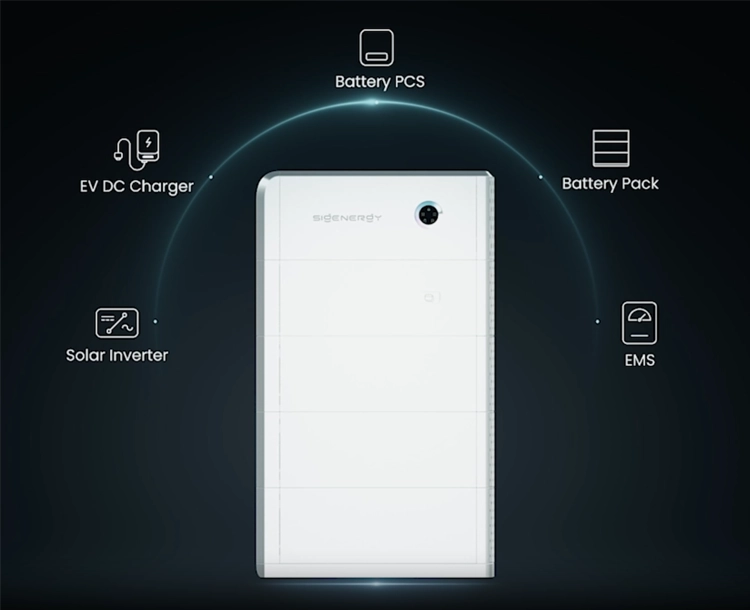How to Test Solar Panels
- Logan Haggerston
How to Test Solar Panels: A Step-by-Step Guide
When it comes to maintaining the efficiency and longevity of your solar panel system, regular testing is crucial. Solar panel testing involves examining the system’s electrical output to ensure that the panels are working optimally. Understanding how to conduct these tests allows homeowners to identify any potential issues early, reducing the risk of decreased performance or system downtime.
Testing Preparation
Before you begin the process of testing a solar panel, it is essential to prepare properly. This involves taking a few safety measures and ensuring all necessary tools and equipment are at hand. Most solar panels come with a specifications label that provides vital information, such as the open circuit voltage (Voc) and maximum power output.
Safety Precautions
- Wear protective gear: This includes safety glasses to protect your eyes from any electrical sparks, and gloves to insulate against electric shock.
- Check for damaged wires or connectors: Inspecting the solar panel for any visible signs of damage can prevent electrical hazards.
- Ensure a dry environment: Testing should be done in dry conditions to reduce the risk of electric shock.
Tools and Equipment Required
A multimeter is an essential tool for these tests, allowing the measurement of voltage and current directly from the solar panels. Monitoring applications are extremely helpful for this testing, giving real-time insights into a system’s performance via an app on your smartphone or computer.
For accurate testing, it’s necessary to consider environmental factors that may impact the panels’ output, such as shading and cleanliness. Regular checks on the inverter data can also provide information on energy conversion rates, highlighting the system’s overall health.

Visual Inspection
When conducting a visual inspection of a solar panel, ensure you check the integrity of the surface, frame, junction box, and cables, pinpointing any physical defects that may affect performance.
Surface and Frame Check
Begin by inspecting the surface of the solar panel for any cracks, scratches, or discolouration. Such defects can impede the panel’s ability to absorb sunlight effectively. The frame should be checked for corrosion or bending that might compromise the panel’s stability.
Junction Box and Cable Examination
The junction box must be secure and free from moisture or damage. Cables should be inspected for insulation integrity and to ensure there are no cuts, frayed edges or exposed wires. These components are crucial for safe and efficient energy transfer from the panel to the inverter and ensuring your panel is functioning properly.
Testing Solar Panel Output
Accurate testing of solar panel output is essential for gauging performance and ensuring efficient function. Two key tests are the Open-Circuit Voltage Test and the Short-Circuit Current Test.
Open-Circuit Voltage Test
To perform the Open-Circuit Voltage (Voc) Test, you must first locate the solar panel’s specifications label to find the rated open-circuit voltage. It is important to then disconnect the panel from any load or battery.
A digital multimeter is required, set to the appropriate DC voltage range. The positive lead of the multimeter should be connected to the solar panel’s positive terminal and the negative lead to the negative terminal. This test should be conducted in full sunlight to obtain an accurate voltage reading, which should be compared against the rated Voc to assess the panel’s health.
Short-Circuit Current Test
For the Short-Circuit Current (Isc) Test, the setup involves a simple reconfiguration of the multimeter to measure current. Disconnect the panel from the load and short the positive and negative terminals directly through the multimeter, set to the appropriate DC current range.
This test, conducted in full sunlight, directly measures the maximum current the panel can produce. Comparing the measured Isc to the rated Isc provides insight into the panel’s performance. It’s important you handle the connections with care as short-circuit currents can be high and potentially hazardous.
Performance Evaluation
When assessing the performance of solar panels, it is important to take into account specific environmental factors and calculate the efficiency accurately.
Irradiance and Temperature Consideration
Irradiance levels directly impact the power output of solar panels. A solar panel’s output amount is optimal when exposed to full sunlight, which is about 1000 watts per square metre in clear conditions. In contrast, clouds, haze, or shade can significantly decrease this irradiance, leading to reduced power generation.
Temperature is another critical factor; as the temperature of solar panels increases, their efficiency tends to decrease. For instance, in a heatwave, a solar panel temperature might climb to 65 degrees, potentially causing a 20% decrease in power output compared to when the panels operate at 25 degrees. A cool breeze can help mitigate this effect by lowering the panel’s surface temperature.
Efficiency Calculations
The efficiency of a solar panel system can be quantified by calculating the actual electrical output relative to the irradiance received. This is expressed as a percentage of the solar energy converted into usable electricity. Here’s a simple formula to determine the efficiency:
- Efficiency (%) = (Electrical Output (kWh) / Solar Irradiance (kWh/m²)) × 100
For instance, if a 5 kW solar system receives an average irradiance of 4.5 kWh/m² per day, the expected daily DC electricity output should be 22.5 kWh. If the actual measured daily output amount is 21.5 kWh, the efficiency calculation would be:
- Efficiency (%) = (21.5 kWh / (5 kW × 4.5 kWh/m²)) × 100 = 96%
It is important to use accurate multimeters or clamp meters to measure the system’s voltage or current for determining its efficiency, as well as power, ensuring these figures are correct for the calculations.
The Impact of Shade and Dirt
When assessing solar panel efficiency, a critical factor is the impact of shade and dirt. These elements can greatly influence the performance of solar panels. Solar panels rely on exposure to sunlight, and any obstruction can reduce their energy output.
Shade Analysis is taking into consideration nearby objects, such as trees or buildings, and the shadows they may cast on the panels throughout the day and year. If you do live in a heavily shaded area, you will need to factor this into your efficiency calculations.
Dirt accumulating on your solar panels can also affect its efficiency. Panels should be kept clean because layers of dirt, leaves, or bird droppings can block sunlight. Before cleaning your solar panels, always check the warranty guidelines as these will recommend appropriate cleaning methods that won’t cause long-term damage.

Troubleshooting Common Issues with Solar Panels
Identifying Defects
Examine the solar panels for any visible damage such as cracks, chips, or discolouration. You can then use performance monitoring technology, accessible via apps like mySolarEdge and Enphase Enlighten, to help detect less obvious issues by tracking the system’s output.
Then if your electricity production continues to fall below expected levels, a closer inspection of the panels and the system components is warranted – time to contact the experts!
Repair and Maintenance Guidelines
Regular cleaning and maintenance of your solar panels is crucial for maintaining their efficiency. Dirt and debris should be cleared from the surface; if rain doesn’t do the job sufficiently, additional cleaning may be necessary.
Maintaining clear exposure to sunlight by eliminating any shading is also a critical part of the system’s maintenance to ensure optimal energy production.
Key Takeaways
- Testing Preparation: Ensure safety and have necessary tools, especially a multimeter.
- Visual Inspection: Check panel surface, frame, junction box, and cables for defects.
- Output Testing: Conduct Open-Circuit Voltage and Short-Circuit Current tests to measure panel health.
- Performance Evaluation: Consider irradiance, temperature effects, and calculate efficiency.
- Impact of Shade and Dirt: Monitor and mitigate shading and dirt for optimal performance.
- Troubleshooting: Identify defects visually and with monitoring technology; prioritize regular maintenance.
Don’t Wait for a Break Down
When it comes to an investment like solar panels, it’s better to be proactive than reactive! Don’t wait for performance to start lagging or something to break – with HCB Solar you can schedule regular maintenance and servicing to ensure your solar panels are clean and in optimal working condition all year round!
Or if you’re new to solar panels and looking to install a fully equipped solar power system and save on your electricity bill, our dedicated local team will examine your unique property for a quote. Our expert installers can help you find the best solar system solution for your needs, using reliable and trusted brands.


